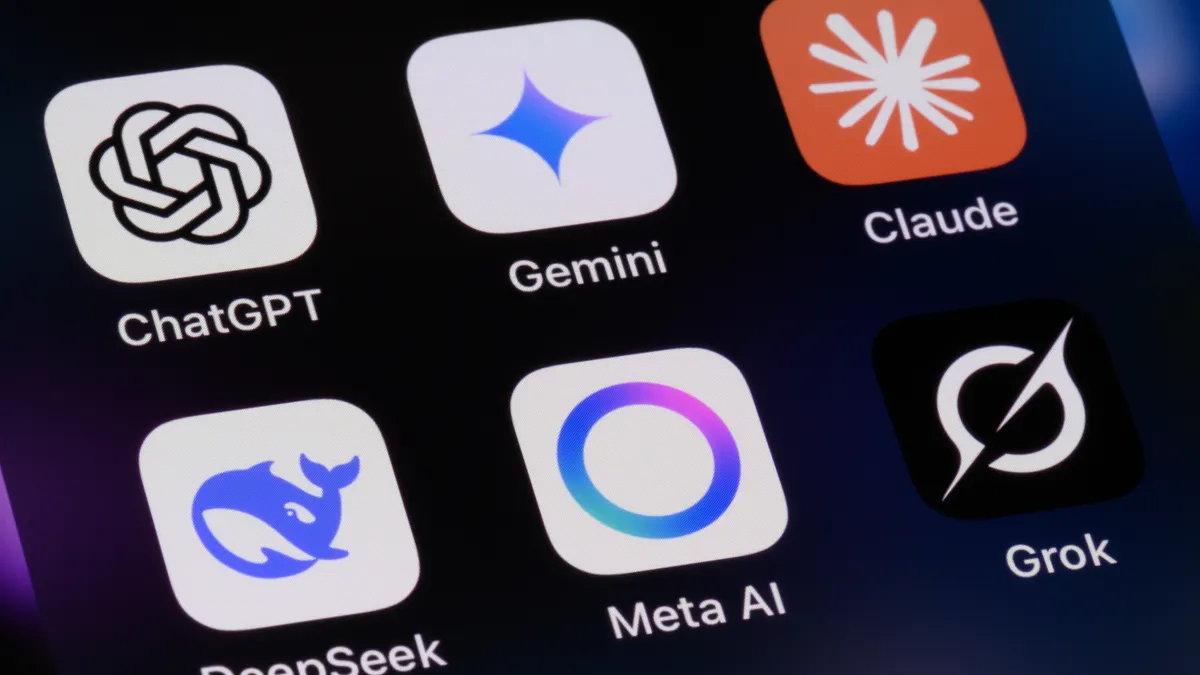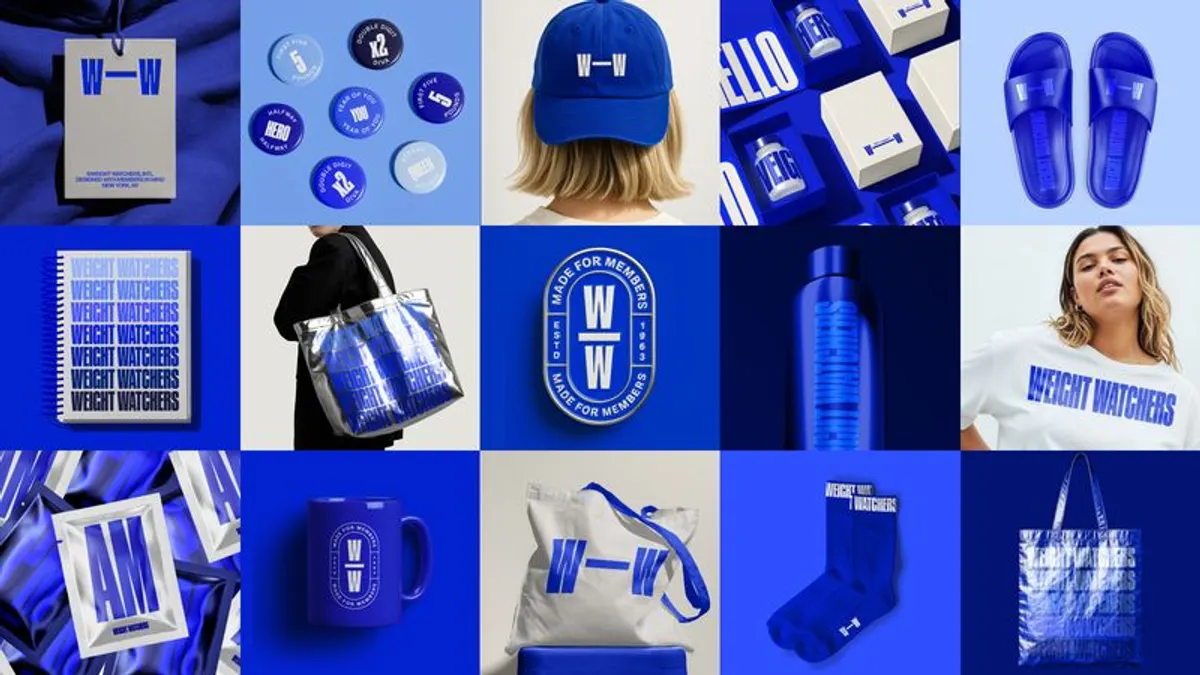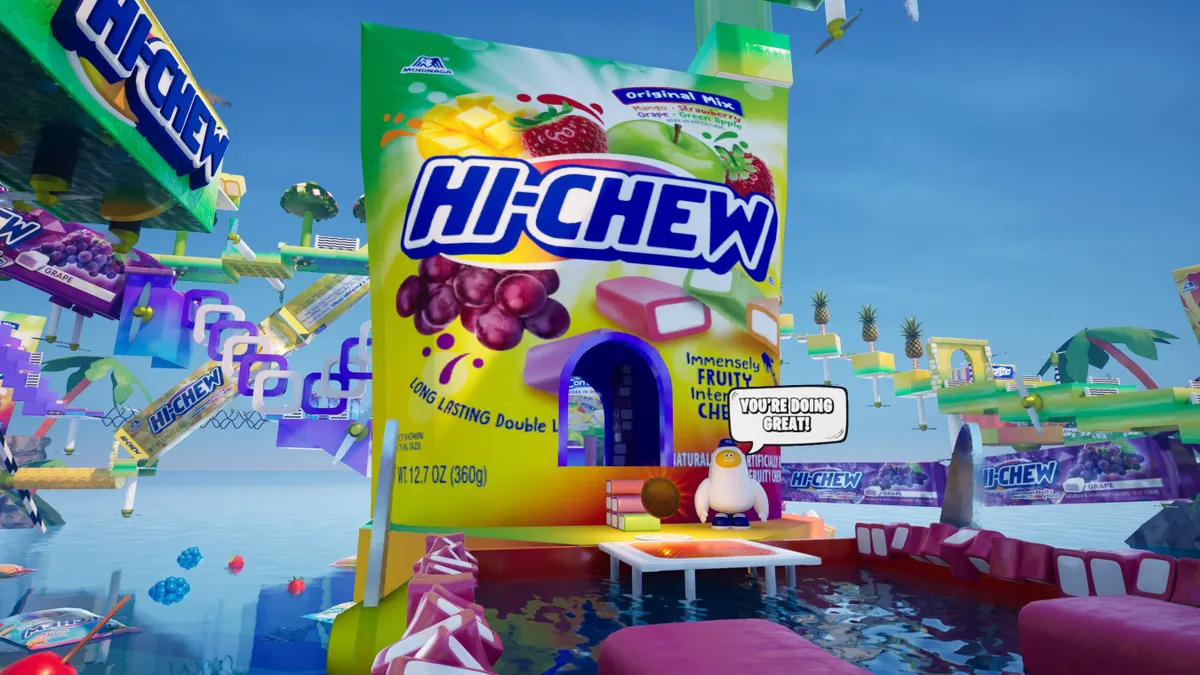Collectibles are inescapable in marketing at the moment. Nonfungible tokens (NFTs), unduplicable digital assets that use blockchain technology to certify ownership of a piece of media like a photo or video, have experienced a sustained surge of interest from brands in 2021. And while NFTs are the buzziest iteration of collectibles, representing an aspect of the so-called "metaverse," there are analogs in real-world goods, with a proliferation of branded merchandise and limited-edition product collaborations targeted at superfan consumers.
For marketers, experimenting with collectibles remains a PR-driven tactic, but also one that tries to read the tea leaves on what the next generation of consumers — a group of digital natives readily familiar with channels like gaming — will want to see from brands.
"We had a time when people were interested in buying physical goods. It was a scheme that gave them a sense of status … millennials really changed a game and said, 'Hey, actually, we want to spend more money on experiences,'" said Emma Chiu, global director of Wunderman Thompson Intelligence. "Now it's shifting again to virtual possessions. It's not necessarily having a digital version of a physical good, it's a combination of these physical goods and these experiences put together into this virtual realm."
One question hanging over tactics like NFTs, in particular, is if they have legs past the short term. Since NFTs first hit the mainstream earlier this year, skeptics have been waiting for the bubble to burst and raised concerns about their environmental impact. Yet, brand activations haven't cooled: McDonald's, State Farm, American Eagle and Toys R Us are among the many to foray into the red-hot market in recent weeks. At the same time, lofty ideas around a metaverse — shared spaces that bridge aspects of the real world with virtual ones — have dominated executive chatter on earnings calls and even informed major platform realignments. It's a concept that appears here to say, whether or not general consumers actually want it.
NFTs are still perhaps a bigger roll of the dice than marketers are accustomed to making, speaking to the broader uncertainty hanging over companies that are trying to connect with increasingly ad-averse audiences. They also aren't especially popular: A recent report from Forrester Research found that 45% of surveyed online adults in the U.S. had never even heard of the format, while 28% stated they don’t understand what NFTs are.
Diversity is even more scarce. One in five online U.S. male respondents indicated they already own at least one NFT versus 7% of female respondents who reported the same. Thirty-seven percent of male respondents expressed eagerness to acquire one compared to just 16% of female respondents. Despite recognition gaps, the collectibles hype machine is running at full force, leading to high valuations and a chance for marketers to flex their IP muscles in a way that could eventually win over new consumers and draw deeper connections with existing fans.
"There is this bigger demand around collectibles and ownership, whether it's digital or physical, that you see being of the moment," said Mike Proulx, research director at Forrester and a co-author of the NFT report. "When you look at the chatter in the community online and Twitter, most of the conversations are around collectibles today."
Short-sighted approach
CMOs are not yet making NFTs or other collectibles a significant line item in the budget, according to Proulx. Most cracks at the technology are intended to generate headlines and some positive word-of-mouth.
"The initial drivers are the shiny object syndrome," said Proulx. "When it comes to NFTs, we don't see it as a seismic shift in the marketing mix, per se."
If NFTs prove sticky, however, more nuanced approaches could be required to make collectibles seem less like a marketing gimmick.
"When you look at the chatter in the community online and Twitter, most of the conversations are around collectibles today."

Mike Proulx
Research director, Forrester Research
Proulx views NFT strategies as currently settling into one of two camps: stunt drops and NFTs that leverage IP in a more meaningful fashion, offering consumers an asset that could be linked to other content or value-adds. For insiders, brand-driven output has largely fallen into the former category.
"I haven't been personally impressed with some of the things I've seen thus far,” said Darren Mann, president of Aria Exchange, an NFT trading platform that is part of media company Aria Network. "I don't think some of the gimmicky drops are going to have sustainability."
There are some standout examples of NFTs deployed for a purpose. Bacardi and agency BBDO New York in October partnered with music producer Boi-1da on a collection of music-themed NFTs that dole out a cut of royalties to the assets' owners. To promote the latest installment in "The Matrix" franchise, Warner Bros. is creating 100,000 digital avatars with the platform Nifty's and selling them for $50 apiece starting Nov. 30. Owners can make different choices for their avatar, like taking the red or blue pill from the movies, and participate in challenges themed around the film's plugged-in universe.
"The biggest shift is perhaps this new expectation of having equity or skin in the game. If social media gave customers a voice in the brand conversation, [NFTs] take this a step further," Simon Kearney, strategy and insights director at Wolff Olins, wrote over email. "Now we have this economic incentive and people are much more engaged and incentivized to build that community alongside the brands."
But many companies and creators are glomming on to the trend simply because it's popular and a potential cash grab, ignoring community or loyalty-building mandates. Meanwhile, just 12% of surveyed consumers are interested in more NFT releases from brands, Forrester found.
"We're very much in a moment where the space seems dominated by hype and is focused on turning a quick profit, but it's easy to imagine purpose being the difference maker in terms of which projects stick around and which are flashes in the pan," Kearney said.
An influx of activity that isn't guided by a clear sense of strategy or demand amplifies some of the biggest pain points about NFTs and collectibles: that they aren't environmentally friendly at a time when the climate is in crisis; are prone to fraud; have a financial barrier to entry that is too steep for most consumers; or simply lack substance.
"You have very successful athletes and otherwise that are dropping NFTs but without the marketing support that you would use for any good product, and they're falling flat and they're burning those individual markets," Mann said. "If everybody's swinging for the fences — for that $1 million, $2 million, $3 million one-off collectible — it doesn't give you an inventory of people to remarket to. That's short-sighted."
Power of IP
If brands are able to rectify the standing issues around NFTs and other collectibles, the rewards could be substantial. That's a big "if," but some platforms are positioning their services around tackling NFT challenges.
Aria Exchange tracks and calculates the carbon footprint of NFT transactions and provides carbon deposits exceeding the levels of CO2 emitted to create a carbon-negative outcome. The company works with clients including National Basketball Retired Players Association, NHL Alumni Association and Major League Baseball Players Alumni Association.
"I think brands are leaning towards working with us versus others because it is more environmentally sustainable," Mann said. "That being a forethought for sustainability has put us in a good position with brands that are highly focused on the PR generated from them minting on blockchains that are not sustainable."
Fostering long-term loyalty is another important goal for brands to realize, but something that's grown difficult in a fragmented digital media landscape. NFTs present the opportunity to sell a piece of IP that can appreciate in value over time and become a cherished item for consumers, not unlike other memorabilia. Marketers that can attract interest for their collectibles, in turn, have a stronger argument that their brand has real equity and assets that people are willing to shell out for.
"NFTs are like the culmination of so many of the things that we've been seeing around protecting IP, really," said Deborah Weinswig, CEO and founder of Coresight Research. "I think that it allows you to monetize your brand in a new way."
"The biggest shift is perhaps this new expectation of having equity or skin in the game. If social media gave customers a voice in the brand conversation, [NFTs] take this a step further."

Simon Kearney
Strategy and insights director, Wolff Olins
In a complementary trend, the market for hobby goods like trading cards has taken off amid the pandemic. The art world, where NFTs first gained traction as crypto-art, is similarly booming, with auction houses like Sotheby's and Christie's seeing their collective sales jump, as reported in The Wall Street Journal.
"It's interesting how the art world is almost dictating that value for us right now," said Wunderman Thompson's Chiu. "It may move to a point where this will become more accessible, but right now, NFTs are still very tailored for a certain market."
Digital ownership takes over
The shift toward the ideas of collectibles and digital ownership could also attain more appeal if the metaverse plants a more tangible foot in reality. Purchasing skins and online items for digital characters is a common practice in gaming through microtransactions. It's helped build titles like Fortnite into media empires. The pandemic has accelerated not only adoption of gaming, but also other digital channels that could serve as a further runway for an NFT breakthrough.
"If you're a gamer, you're going to understand this concept much more readily," said Weinswig. "There's also, if you think about the change in penetration of e-commerce utilization and spending in the last 18, soon to be 24 months ... how the consumer has completely changed."
Assuming the core tenants of the metaverse come to fruition — including that people will have digital avatars that they regularly purchase goods for — then trying out formats like NFTs now could be an important consideration for marketers that will need to continue to test and learn on a new frontier that may eventually generate revenue.
"What's interesting with NFTs is that it's creating a different type of retail model. Auctioning is becoming an interesting retail model that brands can also experiment with," Chiu said. "It allows for them to kind of have this moment that they're selling as well."






















